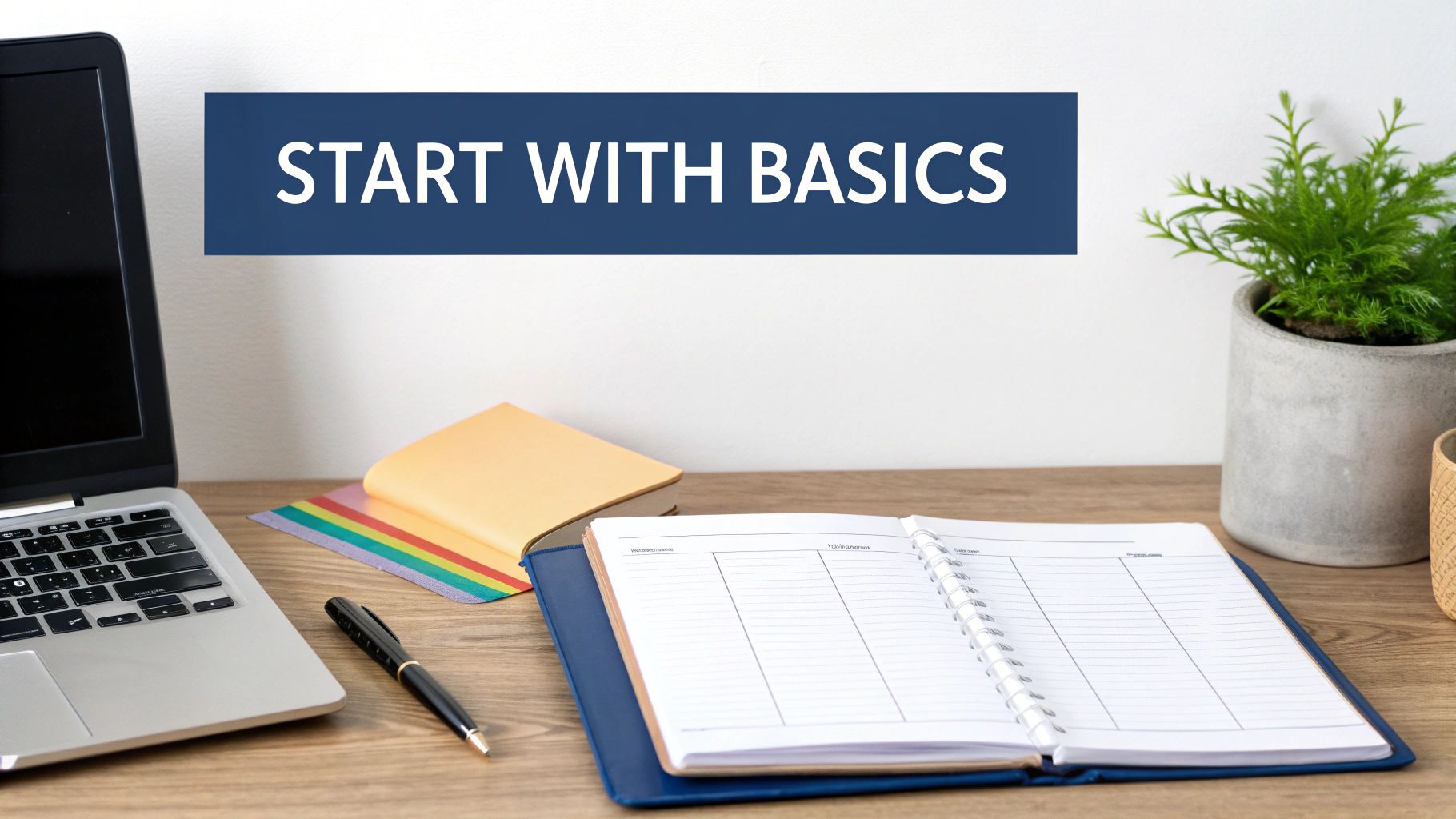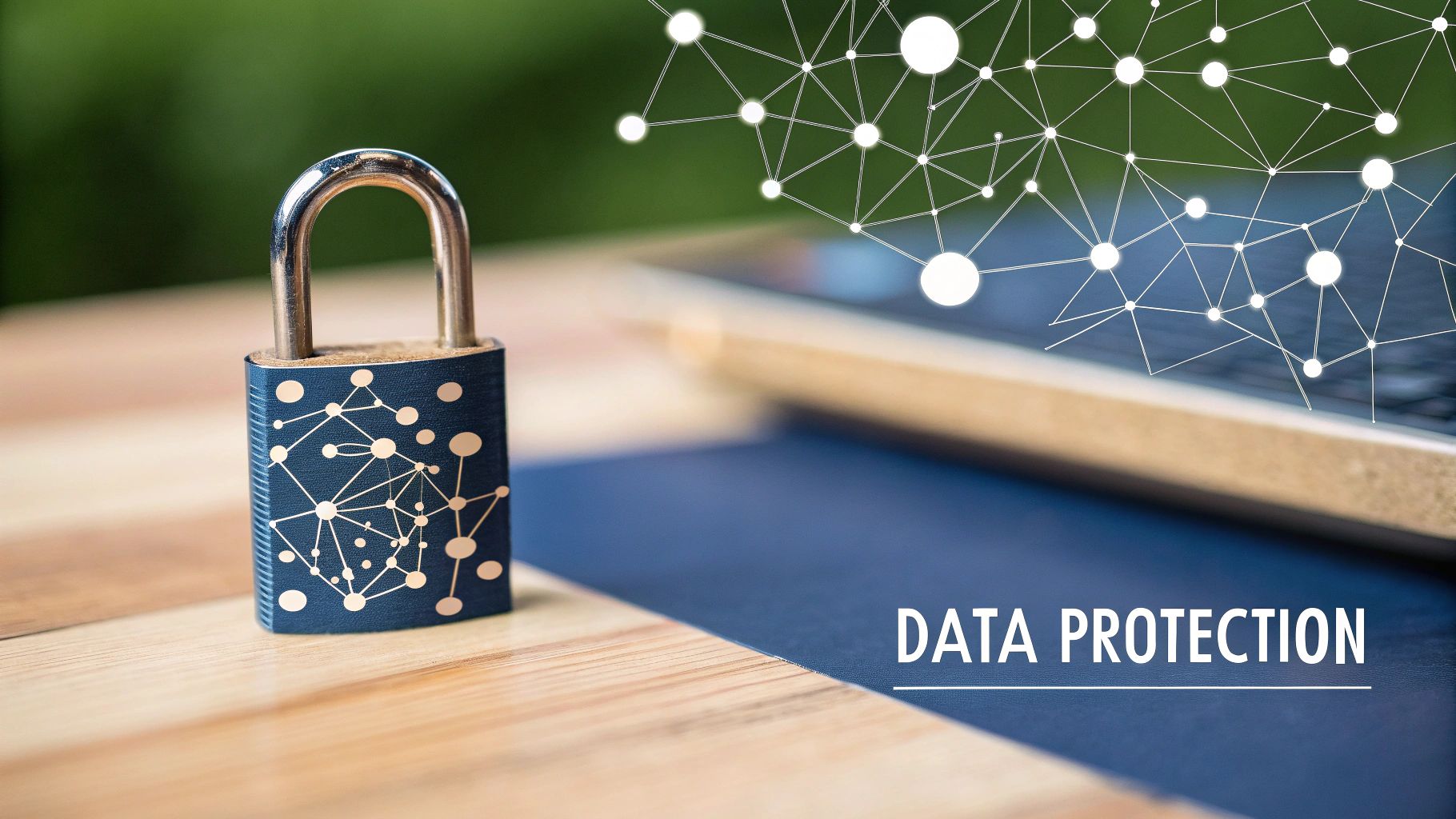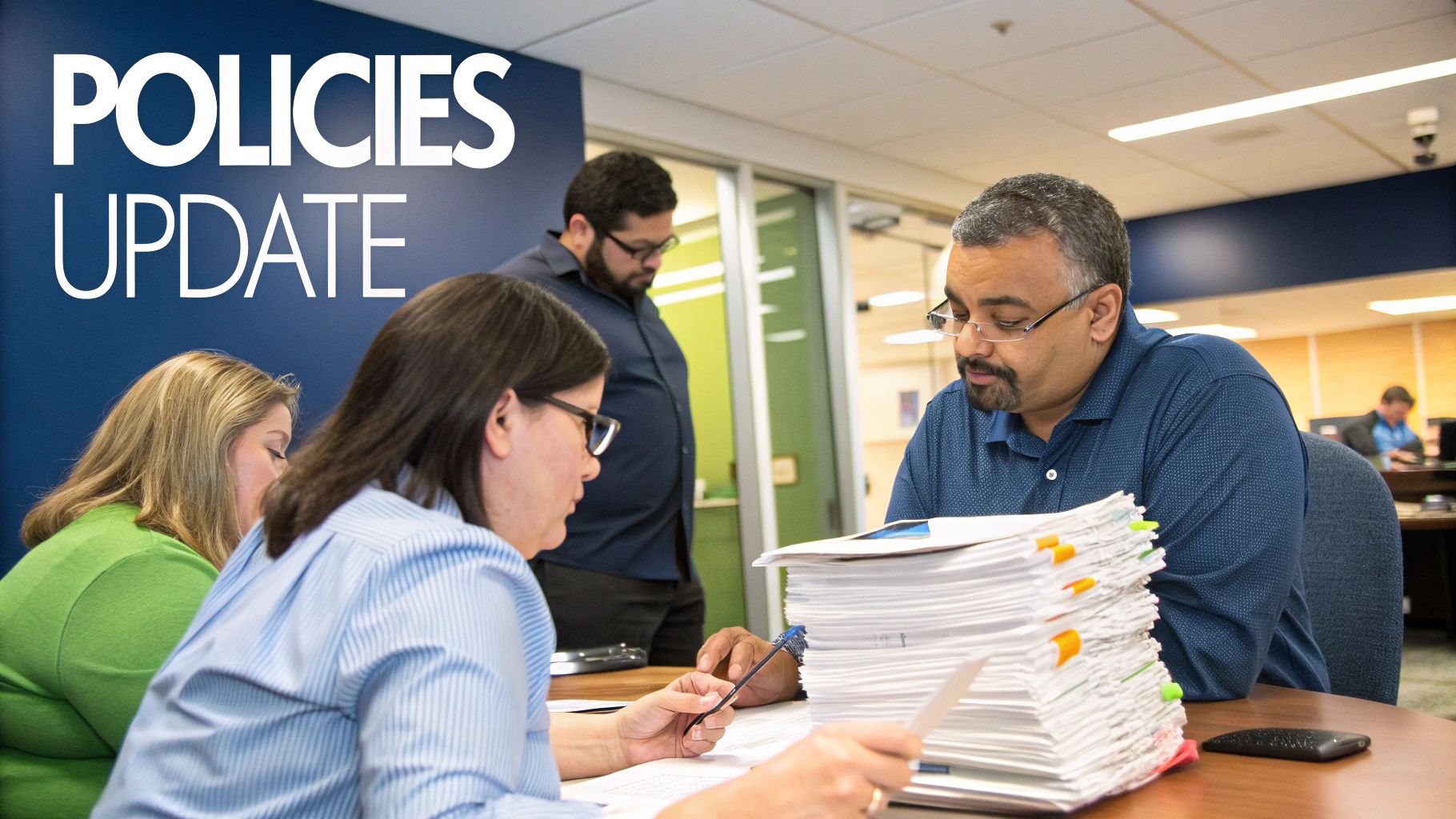The Ultimate GDPR Compliance Checklist: Expert Strategies for Data Protection Success
Making Sense of GDPR Investment and Strategic Planning

Getting GDPR right requires more than just spending money - it needs careful planning and strategy. Many organizations make the mistake of allocating budget without first mapping out how those resources will actually improve their compliance. This section explores how to build an effective GDPR compliance program that protects your business while making smart use of your investment.
Understanding the Cost of Non-Compliance
The financial stakes for GDPR violations are significant - fines can reach €20 million or 4% of annual global revenue, whichever is higher. But the true cost extends beyond monetary penalties. Data breaches and compliance failures can severely damage customer trust and brand reputation, sometimes taking years to rebuild. By viewing GDPR investment as risk management, you can protect both your bottom line and your market position.
Building a Business Case for GDPR Investment
To secure support and resources for GDPR compliance, you need to show clear business value beyond just avoiding fines. Strong data management practices deliver measurable benefits: lower storage costs, higher quality data, and more efficient operations. For example, many companies find that organizing their data for GDPR compliance helps them better understand and serve their customers while reducing waste in their systems.
Prioritizing Your GDPR Investments
Different aspects of GDPR require different levels of attention and resources. Start by examining where your biggest risks and opportunities lie based on your specific situation - what types of data you handle, how complex your data flows are, and how mature your current privacy program is. This targeted approach helps you focus spending where it matters most.
Measuring the ROI of Your Privacy Program
While some GDPR benefits like avoiding fines are easy to quantify, others like increased customer trust are harder to measure directly. Focus on concrete metrics that show program effectiveness: reduced breach incidents, faster response times for data requests, and improved customer satisfaction scores. These numbers help demonstrate the real value your privacy investments deliver.
Creating a Sustainable GDPR Compliance Checklist Strategy
GDPR compliance isn't a one-time project - it requires ongoing attention and updates as your business and regulations evolve. Build a living compliance framework with regular monitoring, audits and training. Make privacy part of your standard operations rather than treating it as a separate initiative. Consider privacy tools that can automate routine tasks, letting your team focus on strategic work. This long-term approach turns compliance from a cost into a competitive advantage that builds customer confidence.
Building Your Privacy Dream Team

Creating an effective GDPR compliance program requires more than just policies and systems - you need the right people leading the charge. Building a dedicated privacy team is essential for managing data protection requirements and maintaining compliance over time. This means bringing together professionals with complementary skills while developing a culture that prioritizes privacy across your organization.
Defining Roles and Responsibilities
Like any effective team, your privacy group needs members with distinct and complementary abilities. Key roles typically include:
- Data Protection Officer (DPO): As the team leader, the DPO oversees your entire GDPR compliance program. The growing importance of this position is clear - by August 2018, 32% of US companies had already appointed a DPO. They advise on obligations, monitor compliance activities, and serve as the main contact for both individuals and regulators.
- Privacy Analysts: These team members handle the daily work of maintaining GDPR compliance, from mapping data flows to implementing privacy-by-design principles and processing data access requests.
- Legal Counsel: With privacy laws constantly changing, in-house or external legal experts help ensure your policies stay current and compliant with new requirements.
- IT Specialists: Technical team members play a vital role in data security by implementing protection measures, managing access controls, and responding to any security incidents.
Fostering a Privacy-Aware Culture
While having dedicated privacy staff is crucial, true success requires spreading awareness throughout your company. Every employee who handles customer data needs to understand their role in protecting it, from marketing teams to customer service representatives.
Regular training sessions help educate staff about GDPR requirements and best practices. For instance, designating privacy champions within different departments can help reinforce good habits and ensure compliance at the local level. This distributed approach gives employees direct ownership over data protection in their daily work.
Empowering Your Team for Success
Even the most skilled team needs proper support to succeed. This means providing adequate tools, training opportunities, and budget to build and maintain an effective compliance program. Consider investing in privacy management software to streamline tasks, ensuring access to legal resources, and supporting ongoing professional development.
This investment delivers real business value. In 2018, nearly one-third of companies invested over $500,000 in GDPR compliance - showing that businesses recognize how protecting privacy helps avoid fines, maintain customer trust, and protect their reputation. When you properly support your privacy team, you build a stronger organization that customers can rely on. This leads to greater confidence in your business, more efficient operations, and sustainable growth over time.
Mastering Your Data Processing Records
Good data processing records are essential for GDPR compliance. Rather than seeing your Record of Processing Activities (ROPA) as just another requirement to fulfill, you can turn it into a valuable tool that gives you clear insight into your data practices. Proper documentation helps you make better decisions about data protection while ensuring you meet regulatory requirements.
Why Meticulous Data Records Matter
While ROPA documentation is required under Article 30 of the GDPR, its value goes far beyond basic compliance. Think of it as a map of your data ecosystem that helps you respond quickly when individuals request their data, demonstrate your compliance to regulators, and spot potential risks before they become problems. For example, when someone asks what information you have about them, detailed records let you quickly provide accurate answers and build trust through transparency.
Building a Dynamic and Effective ROPA
Your ROPA should grow and change along with your business rather than remaining static. Make it a regular practice to review and update your records whenever you add new data processing activities, modify how you collect data, or implement new systems.
Technology can make this ongoing maintenance much easier. Privacy management tools can handle much of the record-keeping automatically, which frees up your team to focus on important tasks like assessing risks and developing policies.
Key Components of Your Data Processing Records
A complete ROPA needs several essential elements to provide proper documentation for compliance reviews:
- Data Sources and Categories: Note where each piece of data comes from and classify it appropriately. Specify whether you collect information directly from individuals or get it from other sources. Be especially careful to identify sensitive data like health records that need extra protection.
- Processing Purposes: Explain exactly why you collect and use each type of data. Clear explanations build trust and show compliance. For example, if you collect email addresses to send marketing messages, state that explicitly.
- Data Recipients: List everyone who can access the data, both inside and outside your organization. Include any vendors or processors you work with. This helps track data movement and maintain accountability.
- Data Retention Policies: Document how long you keep different types of data and your criteria for deletion. This shows you minimize data storage and helps control costs. Make sure retention periods match legal requirements and business needs.
- Security Measures: Describe the specific technical and organizational protections you use, like encryption and access controls. Include your security audit schedule. This demonstrates your commitment to keeping data safe.
From Compliance to Strategic Advantage
When you take a systematic approach to data processing records, what starts as a compliance requirement becomes a valuable business tool. A detailed ROPA gives you insights that improve how you handle data, boost efficiency, and strengthen customer relationships. This helps you make smarter decisions while building a stronger privacy program that supports long-term success.
Navigating Common Compliance Challenges

Creating and maintaining GDPR compliance requires more than just knowing the rules - organizations must tackle several key operational challenges. Most businesses struggle with effectively managing data subject rights, handling international data flows, and overseeing their vendors' compliance. Let's explore how to address these common hurdles.
Managing Data Subject Rights
The GDPR gives individuals significant control over their personal data, which means companies need clear systems for handling Data Subject Access Requests (DSARs). When someone asks to access, correct, delete, or transfer their data, organizations must respond within one month. Take the "right to be forgotten" - when someone requests deletion, companies must remove their data not just from their own systems but also from any third parties they've shared it with. Without proper tools and processes, managing these requests efficiently becomes nearly impossible.
Tackling Cross-Border Data Transfers
When companies move personal data across borders, especially outside the European Economic Area (EEA), they face strict requirements. To transfer data internationally, organizations must use approved methods like Standard Contractual Clauses (SCCs) or Binding Corporate Rules (BCRs). This requires carefully checking international partners' data protection standards and putting proper legal agreements in place. Getting this wrong can result in major penalties, both financial and reputational.
Maintaining Vendor Oversight
Many companies rely on outside vendors to process personal data, but this doesn't reduce their compliance obligations. In fact, organizations remain responsible for how their vendors handle data. This means carefully choosing vendors, including clear GDPR requirements in contracts, and regularly checking that vendors follow proper data protection practices. Regular audits and compliance reviews help ensure vendors maintain appropriate standards over time.
Balancing Compliance and Business Objectives
While GDPR requirements may seem restrictive, companies can meet their obligations while still growing their business. The key is building efficient processes - for example, automating DSAR responses saves staff time, while considering privacy from the start of new projects prevents costly changes later. Taking this approach not only reduces risks but also builds customer trust by showing a genuine commitment to protecting personal data. When viewed this way, GDPR compliance becomes less of a burden and more of an opportunity to improve data practices in ways that benefit both the business and its customers.
Implementing Effective Security Controls

Strong security controls are essential for GDPR compliance, helping protect personal data and earn customer trust. By taking a systematic approach to security, organizations can create defenses that work effectively while remaining practical to implement and maintain.
Prioritizing Data Security in Your GDPR Compliance Checklist
Just like a bank vault uses multiple safeguards rather than a single lock, GDPR security requires several coordinated measures working together. Think of it as building layers of protection - if one layer is compromised, the others still shield sensitive data. This defense-in-depth strategy reduces weak points and limits the potential impact if a breach occurs.
Essential Security Controls for GDPR Compliance
To build strong data protection, include these key security elements:
- Encryption: Makes data unreadable to unauthorized parties during storage and transmission, similar to encoding messages in an unbreakable code
- Access Management: Controls who can view and modify sensitive information by assigning specific permissions, like giving bank employees different keys based on their roles
- Data Masking and Pseudonymization: Replaces identifying details with alternate values while preserving data usefulness
- Regular Security Audits and Testing: Routinely checks systems for weaknesses before attackers can exploit them
- Incident Response Plan: Maps out exact steps to take if a breach happens, enabling quick action to contain problems
Building a Culture of Security Awareness
While technical protections matter, employee awareness is equally vital. Regular training helps staff understand security best practices and their role in protecting data. When everyone knows the importance of data protection, security becomes part of daily operations rather than an afterthought.
Privacy by Design: A Proactive Approach
Plan for privacy from the start of any new project rather than adding it later. For example, when creating a new application, decide upfront to collect only essential data. This prevents unnecessary risks and shows users you take their privacy seriously.
Making security central to operations protects your reputation and builds lasting customer relationships. Strong data protection is no longer optional - it's a key business requirement that pays off through increased trust and sustainable growth. Most importantly, it gives customers confidence that their personal information is in safe hands.
Building Sustainable Compliance Programs
Creating an effective GDPR compliance program requires ongoing attention and maintenance. While checklists provide a good starting point, true compliance means weaving data protection into your company's daily operations. The goal is to move beyond simply meeting requirements and make privacy central to how your business functions.
Monitoring and Assessment: The Cornerstones of Continuous Compliance
Regular monitoring and assessment are essential for maintaining GDPR compliance over time. Like a ship adjusting its course, your compliance program needs consistent oversight to stay on track. This means routinely reviewing data processing activities to ensure they match stated purposes and meet legal requirements. Regular checks of security controls, including access logs and intrusion detection systems, help catch potential issues early. By establishing this cycle of monitoring and adjustment, you can keep your program running smoothly as threats and regulations change.
Adapting to the Evolving Regulatory Landscape
Data privacy regulations and best practices continue to develop and change. To maintain compliance, organizations must stay informed about updates from supervisory authorities, follow industry standards, and participate in relevant training events. For instance, when rules around international data transfers shift, companies need to update their data handling processes accordingly. Taking a forward-looking approach to regulatory changes helps prevent compliance gaps and reduces risk.
Measuring Program Effectiveness: Demonstrating Value and Driving Improvement
To show the impact of your GDPR program and identify areas for growth, regular measurement is key. Track meaningful metrics like how quickly you process data requests, your response time for potential breaches, and compliance-related costs. This data reveals what's working well and what needs attention, helping you allocate resources effectively. With clear metrics, you can show the program's value to stakeholders while making informed improvements.
Embedding Privacy into Business Processes: A Proactive Approach
Long-term compliance success requires making privacy part of your standard business practices. This means considering data protection from the start of new projects, not as an afterthought. When developing products or services, apply data minimization principles to collect only essential personal information. Conduct privacy impact assessments early to spot and address potential issues. By making privacy a natural part of how you operate, compliance becomes more sustainable. These practical steps help build trust with customers while supporting your business goals.
Simplify your documentation, automate data subject requests, and manage compliance more efficiently with Whisperit. Learn more about how Whisperit can empower your GDPR compliance program.